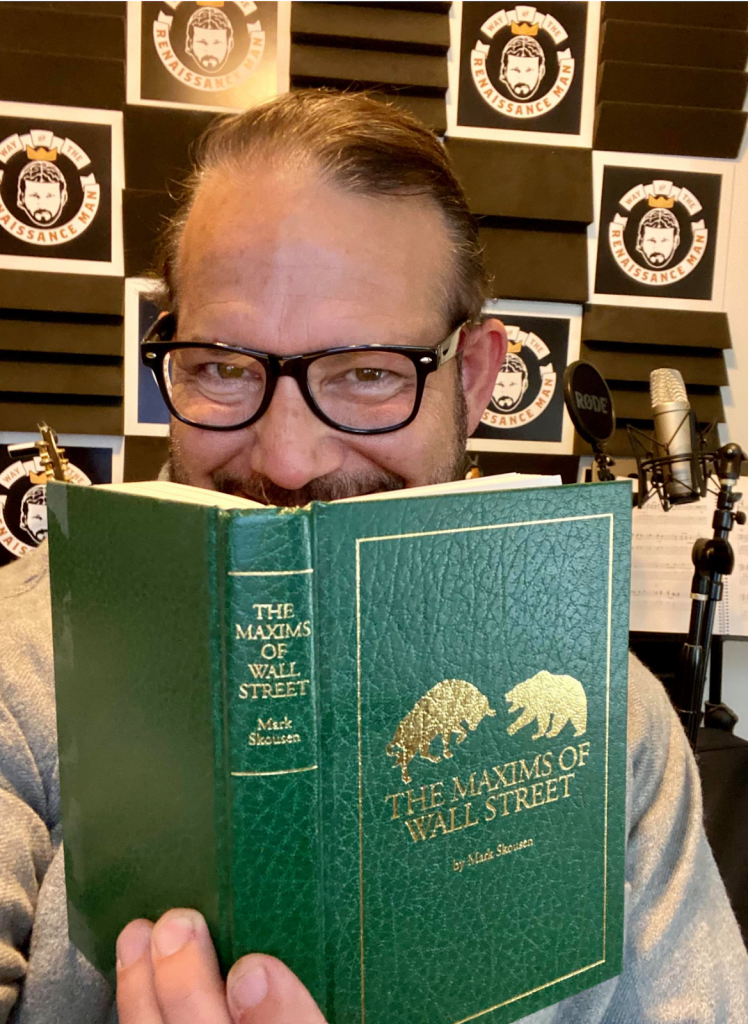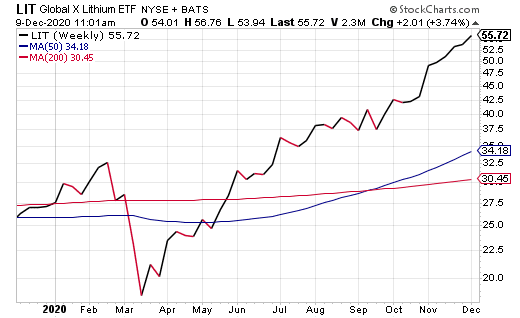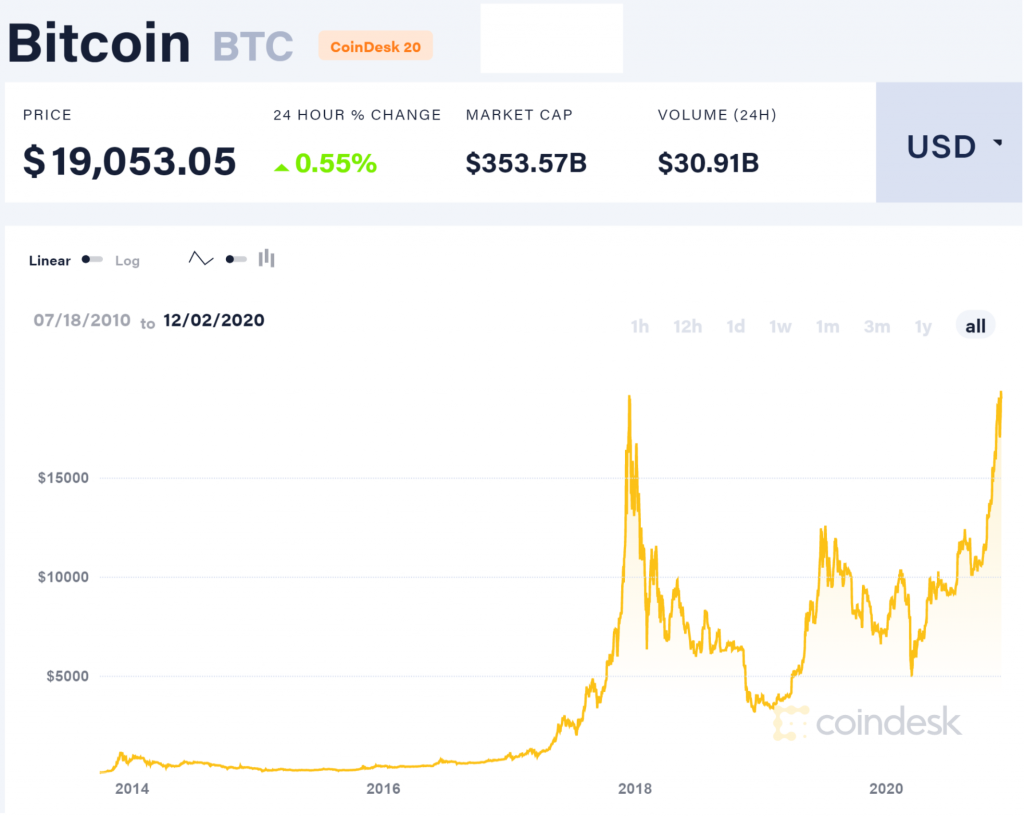My Favorite Holiday Gift Ideas
It is that time of year.
Indeed, the holidays will soon be here, and that means now is the time to start thinking about the gifts you will be giving to those you value. And if you’re like me, you love giving gifts, but not just any gifts.
To me, gift giving is an art. A wise friend told me long ago he had two maxims when giving gifts. The first applies more to a man courting a woman, and it goes like this: “The key to a woman’s heart is an unexpected gift, at an unexpected time.”
From experience, I can confirm that this maxim works exceedingly well. As for maxim two, it is as follows: “It doesn’t have to be expensive, but it does have to be special.”
This is the rule that applies not just to lovers, but to all of us during the holidays.
Indeed, it’s the special gifts that matter most, as they not only are the most memorable, but they’re also the most meaningful. And by meaningful, I mean they convey what the person receiving the gift means to the gift giver.
Today, I am going to tell you about some of my favorite gift ideas — ideas that are both inexpensive and special. And while some of these gift ideas might not be right for everyone on your shopping list, I suspect these ideas will be a good fit for many readers in The Deep Woods demographic — a demographic that is highly successful, highly educated, rational, life-loving and always interested in displaying the very best within.
To me, the most special gift is the gift of knowledge.
The easiest, most cost-effective and arguably the best way to give knowledge is through books. Whether it’s a great work of literature, an insightful self-help manual, or a great “how to” book on a subject close to the recipient’s heart, a really good book has got to be my all-time favorite special gift to give (and one that also happens to be inexpensive).
For those who love literature, fiction, action, adventure, mystery and philosophy, then give the gift that asks, “Who Is John Galt?”
Here I am recommending the greatest novel ever written (in my not-so-humble opinion), “Atlas Shrugged” by Ayn Rand.
If you’ve read the novel already, you know how brilliant it is. But if you haven’t read it in some time, give yourself a gift and read it again. And, if you have any young minds on your holiday shopping list, then giving them “Atlas Shrugged” will make them remember you forever — and it may indeed alter the course of their lives the way it altered mine.
For those who prefer self-help style works, I recommend one of the original works on how to be human, “Meditations,” by Marcus Aurelius.
This work is more than 2,000 years old, but the wisdom in it applies to what you are doing right now — and what a human being should do every day to maximize his/her time on Earth. The insights, wisdom and practical guidance delivered on every page of this work are amazing, and the subjects vary from how best to deal with life’s inevitable adversity to how best to interact with others. I also highly recommend the Gregory Hays translation, as I think it is the smoothest and most poetic out there.
As for the “how to” category, well, I’ve always felt that a collection of wisdom from the best brains in that industry has been most special to me. And on this front, there is no better “how to” anthology than the one by my friend, fellow Fast Money Alert co-editor and brilliant economist, Dr. Mark Skousen.
The work I am specifically referring to here is “The Maxims of Wall Street.” This is a collection of some of the greatest wisdom ever to flow from the biggest and brightest names on Wall Street. Great investors such as Jesse Livermore, Baron Rothschild, J.P. Morgan, Benjamin Graham, Warren Buffett, Peter Lynch and John Templeton are just a sneak peek at some of the names you’ll discover in this fantastic collection.
Then there is profundity from the likes of Ben Franklin, John D. Rockefeller, Joe Kennedy, Bernard Baruch, John Maynard Keynes, Steve Forbes and numerous other luminaries too copious to mention.

Your editor with his very own signed copy of “The Maxims.”
As Mark puts it, “For years, I’ve been compiling these financial adages, ancient proverbs and immortal poems found in new and rare financial books and quoted regularly by investors, money managers, brokers and old timers.”
Now, this year marks the 10th anniversary of “The Maxims,” and fortunately for us all, Mark has made available this special 10th-anniversary edition just in time for you to give that inexpensive and special holiday gift.
Whether that gift is to yourself or to someone very special, you should definitely do yourself a favor and give this book to those you value (including yourself).
The new edition is indeed special, as it is some 282 pages, with an additional 200 quotes since the first edition came out in 2011 (I can’t wait to get mine!)
So, if you want to give the gift of knowledge this year, the best kind of gift, and if you love money, investing and wisdom (and I know you do because you read this publication), then “The Maxims of Wall Street” is the perfect holiday present.
************************************************************************
ETF Talk: Invest in Lithium with This Fund
The Global X Lithium & Battery Tech ETF (NYSEARCA:LIT) invests in the full lithium cycle, starting with mining and refining the metal and finishing with battery production.
This ETF gives broad exposure to the metal, while offering targeted, concentrated exposure tilted toward micro-cap stocks. Good tracking of its underlying index tempers the fund’s variable spreads and high expense ratio. For investors looking for an exchange-traded fund (ETF) to gain exposure to the lithium niche, LIT is the only game in town.
LIT is heavily weighted in Asia, with 43.3% of its net assets in China, 11.7% in Korea and 6.7% in Japan; 22% in the United States; 5.2% in Australia; and 4.8% in Chile. Its top three holdings include 12.27% in Albemarle Corp. (NYSE:ALB); 5.36% in Ganfeng Lithium Co. (OTCMKTS:GNENF); and 5.35% in Tesla, Inc. (NYSE:TSLA).

Chart courtesy of StockCharts.com
The fund has amassed $1.42 billion in assets under management with 42 holdings and an average spread of 0.09%. Its expense ratio sits at 0.75%, which means it is relatively more expensive to hold in comparison to other exchange-traded funds. LIT currently trades around $55, giving it a 0.85% yield.
LIT tracks a market-cap-weighted index of global lithium miners and battery producers. The fund seeks to provide investment results that correspond generally to the price and yield performance, before fees and expenses, of the Solactive Global Lithium Index.
Two main reasons to invest in this Global X fund are thematic exposure and efficient access. The fund is a thematic play on lithium and battery technology, and it offers efficient access to a broad basket of companies involved in lithium mining, lithium refining and battery production.
However, I urge all interested investors to exercise their own due diligence to determine whether any stock or fund meets their own portfolio strategy and goals.
As always, I am happy to answer any of your questions about ETFs, so do not hesitate to send me an email. You just may see your question answered in a future ETF Talk.
************************************************************************
In case you missed it…
Champing at the Bitcoin
When you make your living by knowing the answers to investors’ questions, you better be prepared. And, though one individual cannot be expected to know every detail about every company and every specialized subsector of the market, the broad scope of the investment landscape means investment professionals are forced to cultivate quasi-encyclopedic knowledge of all sorts of subjects.
I confronted this situation recently when I appeared at our Post-Election Investment Summit in Las Vegas. It was there that I was asked a series of great questions about one of the hottest topics in the market today — Bitcoin.
Now, because I am a small “l” libertarian, and an advocate of laissez-faire capitalism (the sort of capitalism that almost entirely divorces the economy from government), I know about what Bitcoin and the other cryptocurrencies promise. That promise is we won’t need to contend with the fiat policies of the Federal Reserve, the European Central Bank or any quasi-government or government agency when it comes to the disposition of our medium of exchange.
And while Bitcoin and other cryptocurrencies are, at this point, still far from that libertarian promise, from a purely speculator and trader’s perspective, fast-money momentum traders are champing at the bit to get in, and out, of Bitcoin.
This affinity for traders to get into Bitcoin should come as no surprise, especially when you consider the price action over the past several years. The chart of Bitcoin below is from the go-to cryptocurrency website CoinDesk and shows the tremendous upside, as well as the gut-wrenching volatility, in the price of the cryptocurrency over its lifetime (from July 18, 2010, to the present).

As you can see, there was a huge run-up in Bitcoin in 2017 that was followed by a nearly equally huge plummet in 2018. Yet, in 2020, Bitcoin has come roaring back, as year-to-date, the price of Bitcoin is up 165.3%.
It is gains of that sort that prompt investor questions about what Bitcoin is, how it works and how to buy it — questions of the sort I fielded from attendees of the Post-Election Investor Summit. Today, I am going to answer some of the most common Bitcoin-related investor questions for you. And to do just that, I have enlisted the help of my friend and macro-analyst extraordinaire, Tom Essaye of Sevens Report Research, whose recent work on cryptocurrencies has added to my knowledge of this rather complex subject.
The most obvious question when it comes to Bitcoin is the basic one: What the heck is Bitcoin?
The short answer is that Bitcoin is a digital currency, which, unlike fiat currency, is created, used and distributed electronically via a decentralized ledger system known as a blockchain. Because Bitcoin is decentralized and resides on a peer-to-peer network, no single institution or person controls it. This makes it different from a currency, such as the U.S. dollar or the euro, which are both controlled by central banks. Bitcoins also cannot be “printed,” and their amount is finite, as only 21 million Bitcoins can ever be created. Bitcoins also are often stored online in what is called a “digital wallet.”
“Bitcoin is unlike a conventional stock, bond, commodity, or fiat currency. In fact, the decentralized and non-traditional nature of Bitcoin is what draws many people to its siren’s call,” said Tom Essaye.
“These investors want to own something that isn’t tied to the whims of government or to some shady corporate oversight. As we have seen with the 2020 election, there is a subset of society with a growing mistrust in many aspects of these cornerstone institutions. That distrust is likely driving a great deal of the recent momentum in Bitcoin as its price has exploded in conjunction with the election fervor,” added Tom.
One very interesting thing I discovered about Bitcoin is that, unlike what the claims of many of its proponents state, Bitcoin is not a safe-haven investment like gold or Treasury bonds. Research from the Kansas City Federal Reserve on the price of 10-Year Treasuries, gold and Bitcoin during periods of stress and no-stress between January 1995 and February 2020 show the correlation of these assets during these periods.
The table from the Kansas City Federal Reserve report below shows that “Both the 10-Year Treasury and gold have negative, statistically significant correlations with the S&P 500, suggesting both assets have the properties of safe havens. In contrast, Bitcoin has a weak positive correlation with the S&P 500 during periods of financial stress, suggesting Bitcoin behaves more like a risk asset than a safe haven.”

So, if you are looking to Bitcoin as a safe haven in the way gold and Treasury bonds have traditionally behaved, then forget it. The better way to look at Bitcoin as an investor is to see it as a risk asset, and a very risky risk asset at that. Yes, you can make a lot of money if you time your Bitcoin entry and exit right, but don’t be fooled into thinking you’re adding some non-correlated, risk-asset diversification to your holdings. The numbers simply do not bear out that conclusion.
Now, that caveat aside, what’s the best way to buy and own Bitcoin as an individual investor?
Well, there are two primary ways. First, you can buy direct ownership in a Bitcoin through an exchange such as Coinbase or eToro. These platforms make it easy for investors to create a digital wallet, transfer in assets and convert those assets to cryptocurrencies — for a trading commission or percentage fee. This is the purest form of ownership, because the holder obtains direct access to the Bitcoin and can make decisions on how it is stored or traded.
The other way, which I think is the much easier way, is to own the Grayscale Bitcoin Trust (GBTC). This unique exchange-traded fund (ETF) was originally launched in 2013 as a private placement for accredited investors to own Bitcoin that was held in a trust. It has since progressed to attain the status of a Securities and Exchange Commission (SEC) reporting company that is available for public trading.
“The premise of GBTC is similar to how the SPDR Gold Shares (GLD) owns and tracks the price of gold,” Essaye said, “It’s setup to offer titled, auditable ownership through a public investment vehicle that holds the coins in ‘cold storage’ or offline. Every share of ownership in GBTC is equal to a fraction of a Bitcoin.”
Owning Bitcoin via GBTC also is easy, from a logistics standpoint, because you can buy it on any platform where you buy stocks and ETFs. Simply log in to your brokerage account, put in the ticker symbol GBTC and buy the number of shares you want. And when you want to sell, just repeat the process with your sell orders.
Finally, one thing to keep in mind here is that GBTC can trade at a premium or discount to the actual price of Bitcoin. As Tom’s research revealed, GBTC has swayed between a premium as high as 41% and as low as 3% over the last 52 weeks. The premium, as of yesterday, Dec. 1, was 30.2%.
This means that the price performance of GBTC won’t exactly track that of Bitcoin. And we can see just that in the year-to-date performance of Bitcoin, which is up the aforementioned 165.3% vs. the year-to-date performance of GBTC, which, as of today, is up 183%. Yet, despite this gap between the actual price of Bitcoin and the price of GBTC, the values are close enough to give you exposure to the price performance of Bitcoin.
So, for investors who are looking for big momentum trading vehicles, GBTC and/or straight-up Bitcoin is certainly where you’ll find a lot of action. Just beware of the downside that can befall you on any given day, as this volatile asset class requires the ability to take profits quickly and to mitigate losses even more quickly.
******************************************************************
Melody Is King
“Melody is King.”
— Brent Larimore
My favorite music composition teacher once told me that when it comes to songwriting, “Melody is King.” (He also told me he learned that from one of his music teachers, but since I heard it straight from him, it shall remain his attribution to me). Now, this is fantastic advice when composing, but it’s also fantastic advice as applied to just about everything we do.
You see, when it comes to any specific activity we engage in, it’s critical to our success to focus first on the “King” attribute, or on the “essence” of that activity. Another way to put this is that, whatever you do, find the key element of that activity, and focus first on that. By becoming a master of the essence of an activity, you can much more easily master the nuanced and tangential details that also come with that activity.
Wisdom about money, investing and life can be found anywhere. If you have a good quote that you’d like me to share with your fellow readers, send it to me, along with any comments, questions and suggestions you have about my newsletters, seminars or anything else. Click here to ask Jim.


